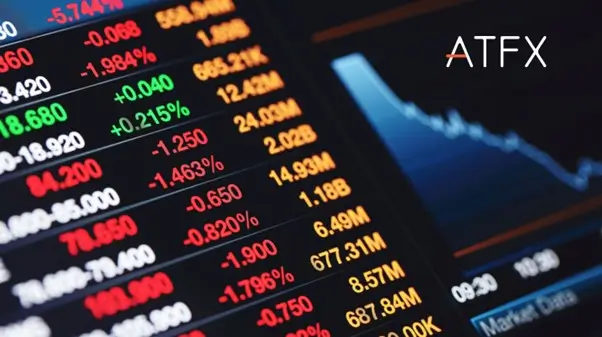Table of contents:
- What is Fundamental Analysis?
- What is Technical Analysis?
- Key Differences Between Fundamental and Technical Analysis
- Pros & Cons of Fundamental and Technical Analysis
- Is Fundamental Analysis or Technical Analysis better?
- Combining Fundamental and Technical Analysis: How Do We Do It?
- How to Trade with Fundamental and Technical Analysis?
- Put Your Learning into Practice with ATFX
Investment analysis is crucial for making informed decisions in the financial markets. Two of the most popular approaches are fundamental analysis and technical analysis. While both aim to provide insights into investment opportunities, they rely on different methods and data. It’s vital to understand fundamental analysis vs technical analysis and utilize them.
What is Fundamental Analysis?
Fundamental analysis (FA) is a method used by investors and traders to evaluate a security’s intrinsic value. It involves studying a company’s financial statements, industry trends, and economic factors to determine whether a stock is overvalued or undervalued. The analysis aims to uncover investment opportunities by assessing a company’s financial health and growth potential.
For example, consider Apple Inc. An investor using fundamental analysis would examine Apple’s financial statements, such as the income statement, balance sheet, and cash flow statement. They would analyse key metrics like revenue growth, profit margins, and debt levels. Additionally, they would evaluate the broader industry trends, such as the demand for smartphones, and economic factors, like global supply chain disruptions. This information helps investors decide about Apple’s prospects.
What is Technical Analysis?
Technical analysis is a method of evaluating securities based on historical price patterns and trading volume. It relies on chart patterns, technical indicators, and statistical measures to predict future price movements.
For example, a trader analysing Tesla Inc. stock might use technical analysis to identify trends and critical levels. They would look at the stock’s price chart and apply indicators like moving averages, the Relative Strength Index (RSI), or MACD to predict future price movements. For instance, a bullish crossover of the MACD line over the signal line could indicate a buy signal.
Find out if technical analysis is important for trading forex.
Key Differences Between Fundamental and Technical Analysis
To better understand fundamental analysis vs technical analysis, let’s look at the key differences between fundamental analysis and technical analysis.
Comparison Factor | Fundamental Analysis | Technical Analysis |
Objective | Determine a security’s intrinsic value and financial health for long-term investment by analysing financial statements, economic data, and industry trends. | Identify market trends, optimal trading opportunities, and trade entry/exit points by analysing price, volume data, and technical indicators. |
Data Used | Financial statements, financial ratios, macroeconomic data, etc. | Chart patterns, trend indicators, momentum indicators, etc. |
Time Frame | Long-term | Short-term |
Type of Trader | Investors and value traders | Day traders, swing traders, and technical investors |
Objective
Fundamental analysis vs technical analysis is aimed at achieving different objectives. The main objective of fundamental analysis is to determine the intrinsic value of a stock based on financial health, business model, industry positioning, and economic factors. This analysis aims to determine whether a stock is undervalued or overvalued compared to its current market price, focusing on long-term investment opportunities. In contrast, technical analysis focuses on predicting the direction of stock prices by studying past market data, primarily price and volume. Technical analysts look for patterns and signals that indicate the future activity of stock prices, making it more about timing the market than evaluating the company’s fundamental principles.
Data Used
Another difference between fundamental and technical analysis is that analysts who use fundamental analysis rely on financial statements, earnings reports, market share data, industry analysis, and economic indicators (like GDP growth rates, inflation rates, etc.). This method also considers qualitative factors such as management quality, brand loyalty, and competitive advantages. Furthermore, technical analysis utilises price charts, historical price data and volume. It also employs statistical analytical tools such as moving averages, RSI (Relative Strength Index), and MACD (Moving Average Convergence Divergence). Technical analysts often use pattern recognition to forecast future price movements.
Time Frame
Regarding the time frame between fundamental and technical analysis, fundamental analysis is generally used for long-term investment perspectives. Investors using this approach typically look to hold stocks for several years. In contrast, technical analysis is more suitable for short-term trading. It is frequently used by day traders, swing traders, or those interested in capitalising on quick market movements that can last from a few minutes to several weeks.
Find out which varieties are more suitable for short-term trading.
Type of Trader
Each type of trader has unique preferences and will select either fundamental analysis or technical analysis depending on their specific trading strategy. Fundamental Analysis appeals to investors and value traders prepared to perform deep dives into financial data and economic indicators to assess stock values. It suits those with a greater tolerance for short-term volatility in anticipation of long-term gains. In contrast, technical analysis attracts traders looking to leverage market trends and momentum. These investors might be less concerned with the company’s financial position and more interested in the trading volume and price movements.
Pros & Cons of Fundamental and Technical Analysis
The table below shows the pros and cons of fundamental analysis:
Pros | Cons |
|
|
The table below shows the pros and cons of technical analysis:
Pros | Cons |
|
|
Is Fundamental Analysis or Technical Analysis better?
The question regarding whether fundamental analysis or technical analysis is “better” is akin to asking whether a hammer or a screwdriver is a better tool: it ultimately depends on the job at hand. Both methodologies have their strengths and areas of applicability, and your investment goals, timeline, and comfort with market analysis techniques should guide the choice between them.
Fundamental Analysis is typically favoured by investors looking to build a portfolio of quality stocks they intend to hold for an extended period. This method is based on the idea that the stock market may misprice a company in the short term but that the firm’s actual value will be reflected in the stock price over the long term. Investors like Warren Buffett have successfully employed this strategy, focusing on companies with robust basic principles and a solid business model that promises steady growth over years or even decades.
Technical Analysis, on the other hand, is generally preferred by traders and short-term investors who seek to profit from market volatility. This approach does not concern itself with a company’s value but rather with the patterns and trends in stock prices. Technical analysts make trades based on predictions of short-term price movements driven by chart patterns, market trends, and other statistical indicators.
Although fundamental and technical analysis differ, both provide valuable insights. The choice between fundamental analysis vs technical analysis depends on the investor’s goals, risk tolerance, and investment time frame.
Combining Fundamental and Technical Analysis: How Do We Do It?
While determining whether fundamental analysis or technical analysis is more effective, traders can integrate both approaches. Fundamental analysis and technical analysis can be combined to provide a comprehensive approach to investing and trading, leveraging the strengths of both methods to make better-informed decisions. Fundamental analysis helps determine what to buy — companies with strong prospects, good management, and solid financials. Technical analysis helps determine when to buy — the ideal times to enter and exit the market based on price movements and trends. For example, investors can use fundamental analysis to select an essentially undervalued stock and technical analysis to determine the best entry and exit points based on stock price trends.
Based on Fundamental Analysis
Start by using fundamental analysis to identify companies with robust financial health and growth potential. Assess metrics like earnings growth and profit margins to find undervalued businesses poised for long-term success.
Refine Timing with Technical Analysis
Use technical analysis to determine the best times to buy and sell the stocks of inherently robust companies. Analyse stock price movements and trading volumes to spot trends and patterns that suggest optimal moments to buy or sell.
Incorporate Market Sentiment
Leverage technical analysis to gauge broader market sentiment. This helps you understand how other market participants are reacting, providing insights into potential short-term price movements and volatility.
Manage Risk Dynamically
Employ technical tools to set precise stop-loss orders and establish clear profit-taking points. This helps manage the risk associated with each investment, minimising losses and protecting gains.
Adapt and Monitor Continuously
Maintain a flexible approach by continuously monitoring a company’s core economic indicators and market performance. Adjust the strategy based on new economic data, company performance updates, and changing market trends to ensure its ongoing relevance and effectiveness.
How to Trade with Fundamental and Technical Analysis?
Understanding Both Fundamental Analysis and Technical Analysis
Trading effectively in the stock market often involves making informed decisions using fundamental and technical analysis. Each method offers unique insights to help traders understand when and what to trade. Here’s a guide to enhancing your trading strategy using fundamental and technical analysis.
Foundation with Fundamental Analysis
Begin by evaluating a company’s financial health using metrics such as earnings per share (EPS), debt-to-equity ratio, and price-to-earnings ratio (P/E). Also, analyse broader economic and sector-specific trends and assess the quality of management and the company’s competitive position.
Refine Timing with Technical Analysis
Use technical tools to study stock price movements and patterns, applying indicators like moving averages, the RSI, and MACD. These can help you determine optimal trading points and understand market sentiment. Finally, determine crucial entry and exit points by identifying critical support and resistance levels where the stock has historically reacted.
Execute and Manage Trades
Combine insights from both fundamental analysis and technical analysis to choose stocks and decide on entry and exit points. Regularly adjust your trades based on technical indicators and essential changes.
Continuous Learning and Adaptation
Stay updated with financial news and economic indicators, and adjust strategies based on market conditions. Continuously backtest and refine your strategies.
Diversified Portfolio
Maintain a diversified portfolio, adhere strictly to your trading plans to avoid emotional decisions, and commit to ongoing education to keep up with market changes.
Trading using both fundamental and technical analysis allows you to leverage the strengths of each method. While fundamental analysis gives you confidence in the quality of your investments, technical analysis can enhance your ability to time the market effectively. This combined approach can lead to more informed decision-making, higher returns, and better risk management in your trading activities.
Put Your Learning into Practice with ATFX
After learning the differences between fundamental analysis and technical analysis, it’s time to test and verify your knowledge with actual scenarios. For experienced traders, you can start trading in the live market after acquiring fundamental and technical analysis knowledge using the ATFX live account. A demo account is the right choice for inexperienced traders or beginners new to the financial markets. A demo account simulates real-market conditions with $50,000 virtual funds so that you can familiarise yourself with the platform, market, and trading strategies without risking your actual capital. Sign up for your demo account now for free!




